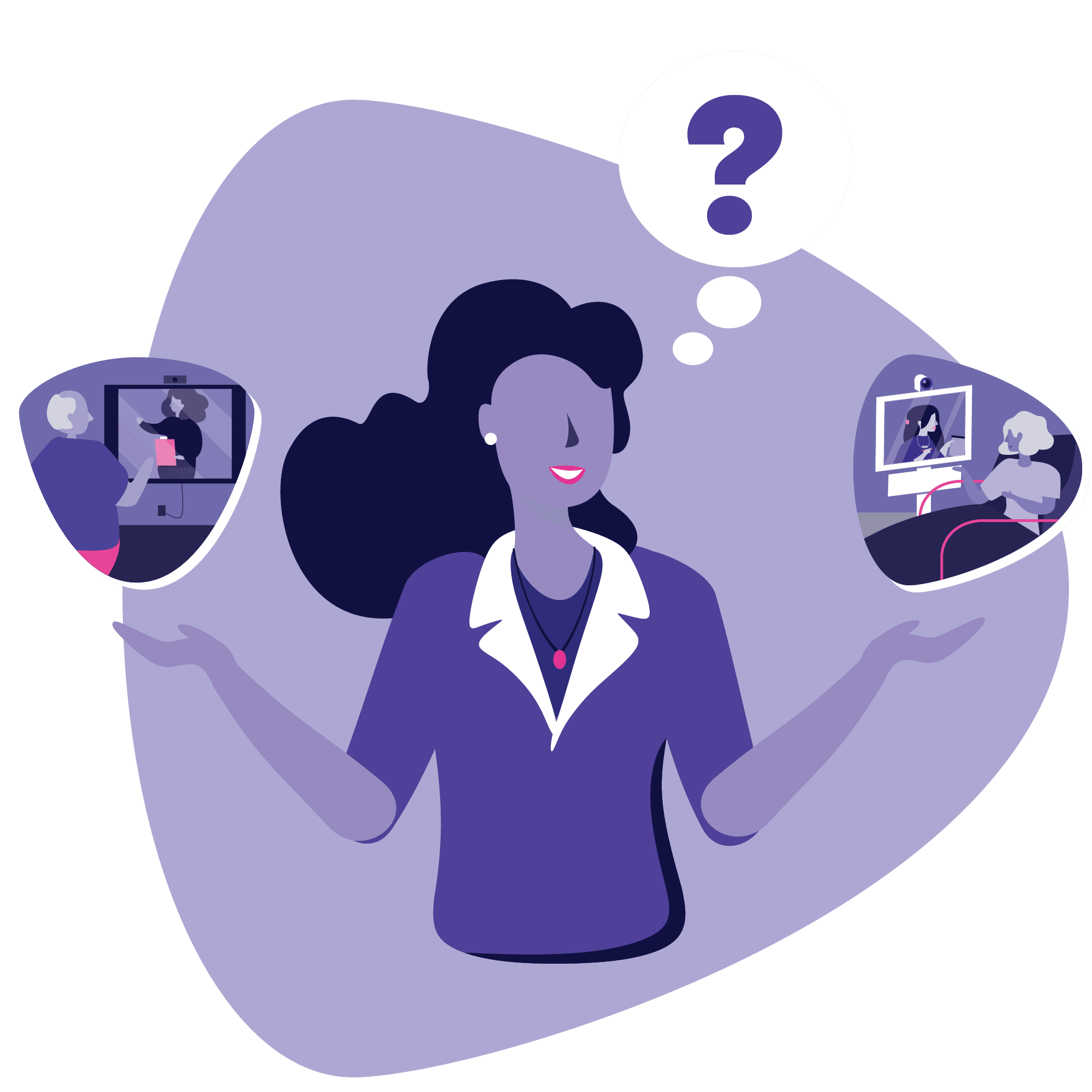Mental health care is inaccessible to many, whether it’s due to transportation barriers, economic opportunity, or obstacles related to race or stigma – getting treatment isn’t always easy.
For healthcare organizations, barriers like these highlight the importance of providing high-quality and accessible care to communities across the country. But, what does genuinely accessible care look like? Truly accessible care meets people where they are, with the right care, at the right time – without concern for location, schedule, or socioeconomic class.
Telepsychiatry meets this demand head-on, creating a bridge between people and the care gaps they encounter when seeking mental health care. Read on to learn more about specific barriers people are facing, how telepsychiatry solves these challenges, and how healthcare organizations can benefit from embracing a truly accessible behavioral health approach.
Addressing language barriers with telepsychiatry
For many patients, deciding to seek mental health treatment is a big decision, and many factors might deter them from getting that help.
The American Psychiatric Association (APA) cites several barriers to care for Hispanic and Latino populations in the U.S., including:
- Language barriers
- Lack of culturally tailored services
- Lack of culturally competent mental professionals
- Shortage of bilingual or linguistically trained mental health professionals
The APA also reports that only one in 20 Hispanics with a mental disorder receive mental health services from a specialist. For patients who speak another language, having a provider who understands their culture and language can help them feel less hesitant about seeking care. However, only 6% of mental health providers in the U.S. are Hispanic, and only 5.5% provide services in Spanish.
Thankfully, telepsychiatry can help bridge this gap. At Iris Telehealth, we draw from a large provider pool, and our patients can connect with providers outside of their geographic area who may speak their same language or have experience with their culture. This connection is highly beneficial to individuals who may not have a provider they can connect with locally.
However, if no providers are available, interpreters can also help patients communicate during their visit. Interpreters work for telepsychiatry the same way they would during an in-person visit. It just requires some organizational efforts on the clinical side and reassurance to the patient that the support is available. If the facility doesn’t have an in-person interpreter, they can join the virtual call. Whether a patient connects directly with a provider who speaks their language or works with an interpreter, telepsychiatry breaks down barriers to help them get the care they need and deserve.
Reaching people where they are with telepsychiatry
For people in rural areas, getting the mental health care they need can seem next to impossible. Rural Americans face several barriers, including the expense of taking time away from work, coordinating with their child’s school or daycare schedules, and the lack of mental health providers in their geographic region. And, even if there are providers close by, there’s typically an extensive waiting list to get care.
Along with these barriers, transportation is a real issue for people in these communities. In an American Hospital Association (AHA) report, 3.6 million people cannot access medical care due to a lack of transportation, and figuring out a way to help individuals get to and from their appointments is crucial to their health.
Despite these barriers, telepsychiatry can free up schedules, help with the expense of driving, and make it possible for someone in remote parts of the country to get the psychiatric care they need. Telepsychiatry serves as a creative avenue for support, allowing people to connect to a high-quality, specialty mental health provider from the privacy of their homes and enabling them to maintain their anonymity at a community level.
Telepsychiatry connects patients with specialty care
The COVID-19 pandemic has been tremendously difficult on families. From schools opening and closing to wearing masks to children losing caregivers – families have been through many changes. Through it all, people have been doing their best to find support.
Families, or anyone deciding to get help, may find themselves overwhelmed by the complicated system or the lack of available providers. Many patients will call a long list of providers to find out they’re calling the wrong type of provider once they have a conversation and realize they need a particular specialist, like a child psychiatrist.
Telepsychiatry helps healthcare organizations connect these patients with the right specialty providers. This level of access is incredibly beneficial to patients.
Overcoming technology barriers with telepsychiatry
Technology may be a barrier for some individuals who aren’t comfortable with virtual platforms. However, there are many steps organizations can take to help make technology more accessible to their patients, whatever the comfort level.
Here are a few steps providers can take to help increase patient comfort with technology:
- Establish a rapport and provide education about what the experience will look like
- Let patients know there is a backup plan if the technology fails
- Reassure them that their appointment will not be lost if they’re disconnected
- Remind the patient that they have support so they don’t feel overwhelmed
Taking these steps can help ensure technology doesn’t create a barrier or present itself as a barrier to seeking care.
By partnering with a telepsychiatry vendor that seamlessly integrates into your systems, patients in the community can access providers from across the country at their local clinic, regardless of what personal access they may have at home. Telepsychiatry creates an easy experience that meets people where they are with compassionate providers ready to provide support.
The importance of provider fit for healthcare organizations
With an increased rate of anxiety, depression, and substance use disorder in communities across the U.S., increasing accessibility to specialty care has never been more critical. Healthcare organizations understand this need well, whether they’ve experienced barriers around the provider shortage or have had difficulty finding the right telepsychiatry provider.
At Iris, we work hard to understand your organization’s needs and find the right provider match for your population. This job-matching approach helps organizations find a provider who will be with them for the long term and establish a relationship with the same level of engagement as if they were on the ground.
Where Iris Telehealth fits in
Iris Telehealth works with healthcare organizations across the country to bring high-quality, specialty psychiatry services to people who need them most. If you’re a healthcare organization looking to increase access in your community, Iris Telehealth can work with you to seamlessly integrate behavioral health services. Contact us today.



